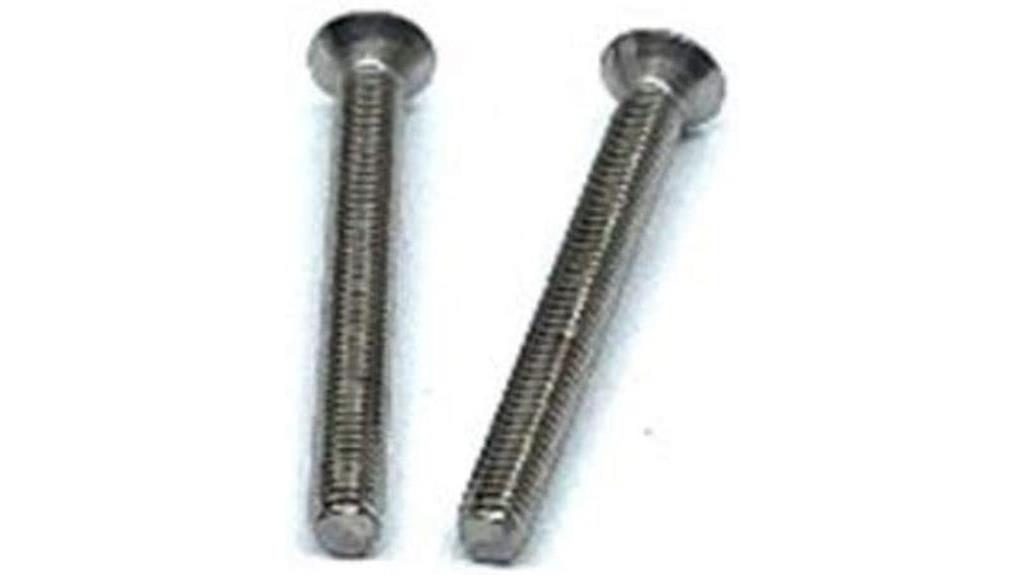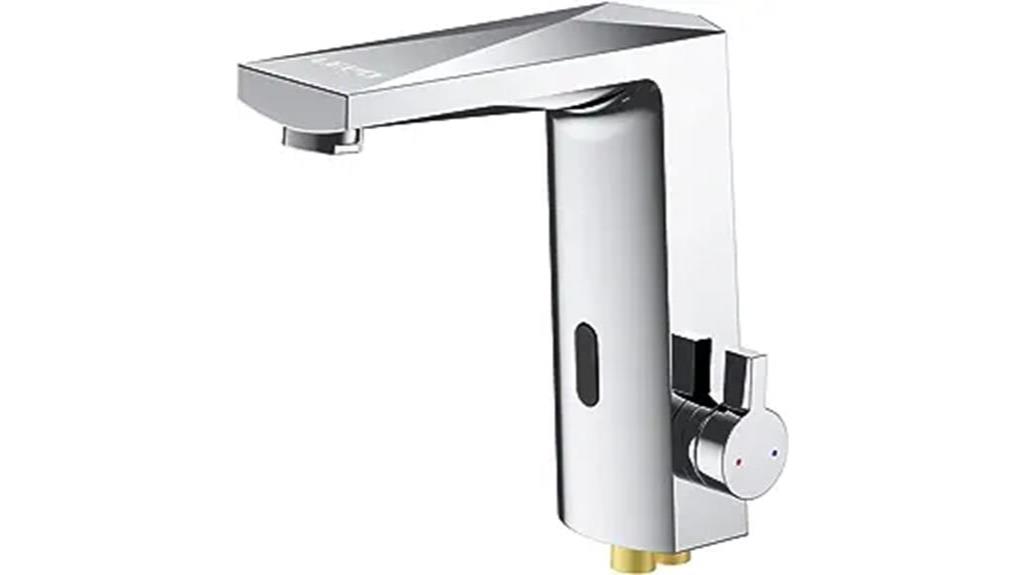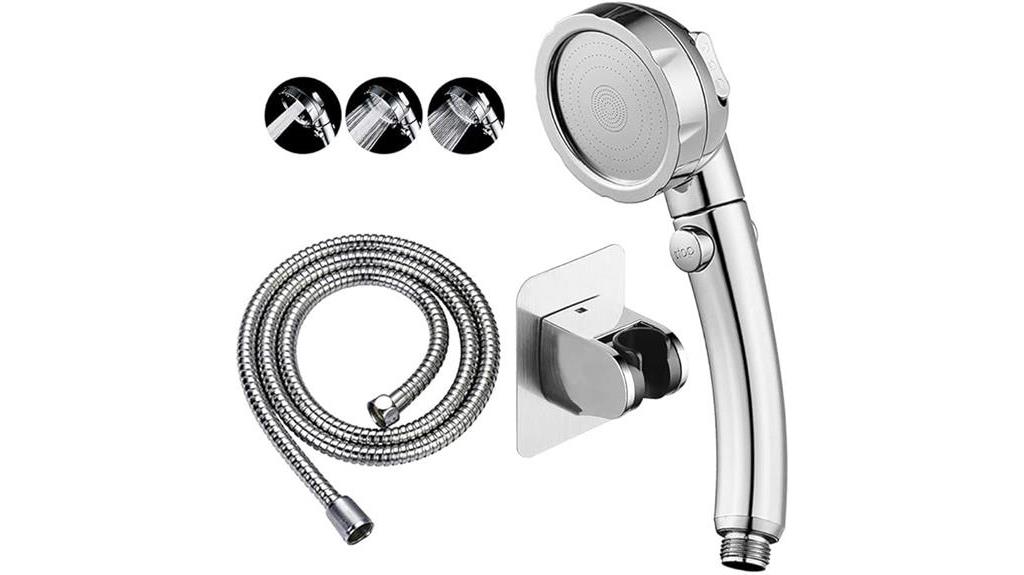Have you ever wondered why your toilet continues to run even after you’ve turned off the water? Well, we’ve got the answers you’re looking for.
In this article, we’ll explore the various reasons behind this common plumbing issue. From a faulty flapper valve to water pressure problems, we’ll break down the technicalities and provide you with expert solutions.
So, if you’re tired of dealing with a constantly running toilet, keep reading for some valuable insights and practical tips.
Key Takeaways
- A worn out or damaged flapper valve can cause continuous leakage in a toilet.
- The fill valve is responsible for refilling the tank with water after each flush, and a malfunctioning fill valve can lead to continuous water flow.
- Improper adjustment of the float, which regulates the water level in the tank, can result in the toilet continuously running.
- Clogging or damage to the flush valve can also cause the toilet to run continuously.
Faulty Flapper Valve
One common reason for a toilet to continue running after the water has been turned off is a faulty flapper valve. The flapper valve is responsible for regulating the flow of water from the tank to the bowl. Over time, the flapper valve can become worn out or damaged, causing it to not seal properly. This can result in water continuously leaking from the tank into the bowl, leading to a running toilet.
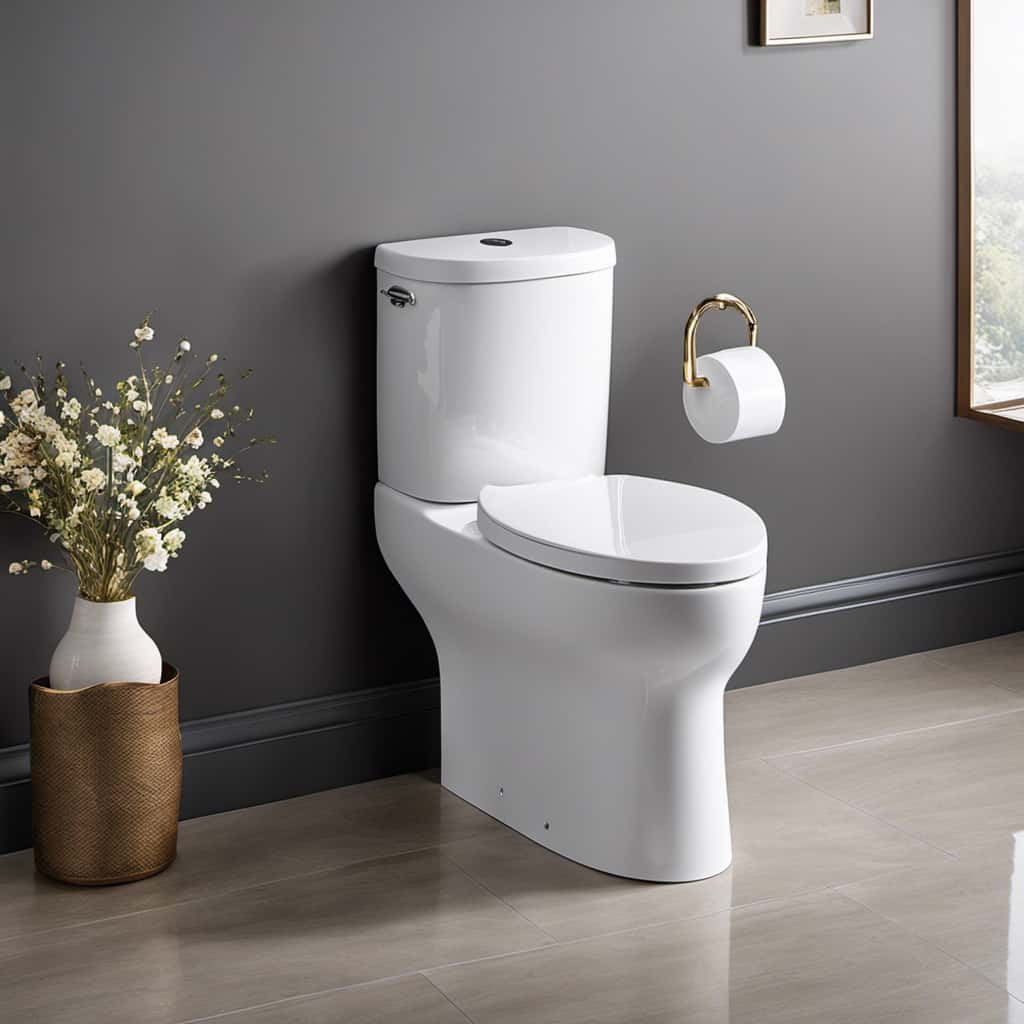
To repair a faulty flapper valve, you can try adjusting the chain length or cleaning any debris that may be preventing it from closing properly. If these steps don’t work, it may be necessary to replace the flapper valve altogether. Flapper replacement kits are readily available at most hardware stores and come with detailed instructions for installation.
Malfunctioning Fill Valve
We often encounter a running toilet even after turning off the water due to a malfunctioning fill valve. The fill valve is responsible for refilling the tank with water after each flush. When it malfunctions, it can lead to continuous water flow, resulting in a running toilet. Troubleshooting toilet issues related to a malfunctioning fill valve involves identifying the problem and replacing the fill valve if necessary. Here is a table that outlines the common signs of a malfunctioning fill valve and the steps for fill valve replacement:
| Signs of a Malfunctioning Fill Valve | Steps for Fill Valve Replacement |
|---|---|
| Continuous water flow | 1. Shut off the water supply. |
| Water level not reaching the fill line | 2. Drain the tank. |
| Noisy or sputtering fill valve | 3. Disconnect the supply line. |
| Water leaking around the fill valve | 4. Remove the old fill valve. |
Improperly Adjusted Float
To resolve a running toilet issue, it’s crucial to check for an improper adjustment of the float. The float is an essential component of the toilet’s fill valve system, responsible for regulating the water level in the tank.
When the float is improperly adjusted, it can cause the toilet to continuously run even after the water has been shut off. Float mechanism troubleshooting involves examining the position of the float and ensuring it’s correctly adjusted.
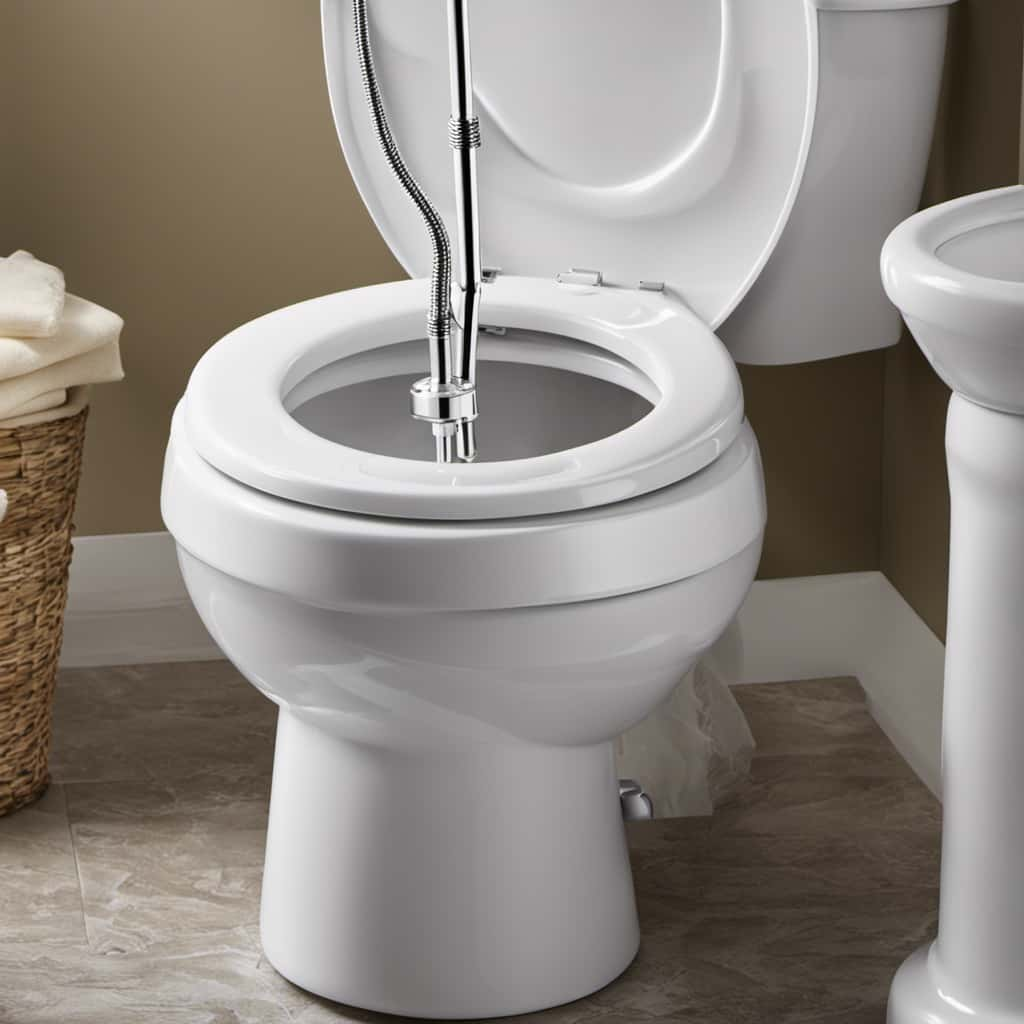
Common DIY fixes for a toilet running after the water shut off include bending the float arm to lower the water level or adjusting the float screw to control the water flow.
Clogged or Damaged Flush Valve
Our next concern is whether the flush valve is clogged or damaged.
The flush valve is a crucial component of the toilet flush mechanism, responsible for releasing water from the tank into the bowl during flushing. If it becomes clogged or damaged, it can cause the toilet to keep running even after you turn off the water.
To troubleshoot this issue, start by inspecting the flush valve for any visible debris or mineral buildup. Use a toilet brush or a wire hanger to gently remove any obstructions.

If the problem persists, the flush valve might be damaged and need replacement. Consult a professional or refer to the toilet’s manual for instructions on how to replace the flush valve.
Water Pressure Issues
To troubleshoot the issue of a running toilet, we need to consider potential water pressure issues. Low water pressure or high water pressure can both lead to problems with the toilet’s functioning. Low water pressure can result in a weak flush or incomplete flush, causing the toilet to continue running. On the other hand, high water pressure can cause the fill valve to malfunction, leading to constant water flow into the toilet bowl. It is important to check the water pressure in your home to determine if it falls within the recommended range of 40-60 psi (pounds per square inch). If the pressure is too low or too high, it may be necessary to adjust the pressure regulator or consult a professional plumber for assistance.
| Water Pressure Issue | Symptoms | Possible Solutions |
|---|---|---|
| Low water pressure | Weak or incomplete flush | Check water pressure in home and adjust if necessary |
| High water pressure | Constant water flow into toilet bowl | Check water pressure in home and adjust if necessary |
Frequently Asked Questions
How Can I Tell if the Flapper Valve in My Toilet Is Faulty?
If your toilet keeps running after you turn the water off, it could be a sign of a faulty flapper valve. Troubleshooting a running toilet involves checking the flapper valve for any signs of damage or misalignment.
Are There Any Common Signs of a Malfunctioning Fill Valve in a Toilet?
When troubleshooting a running toilet, it is crucial to identify signs of fill valve malfunction. These indicators, like a leaky flapper or constant water flow, can help determine the cause and necessary repairs.

What Are the Steps to Adjust the Float in a Toilet Properly?
To adjust the float in a toilet properly, first, locate the fill valve. Then, turn the adjustment screw clockwise to lower the float and counterclockwise to raise it. Troubleshooting a running toilet involves checking the float position.
How Can I Determine if the Flush Valve in My Toilet Is Clogged or Damaged?
To determine if the flush valve in our toilet is clogged or damaged, we can perform a simple test. First, we need to turn off the water supply. Then, we can inspect the flush valve for any blockages or signs of damage.
What Are the Potential Causes of Water Pressure Issues in a Toilet?
There are several potential causes for toilet water pressure issues, which can affect toilet water flow. These include clogged pipes, water supply valve problems, or a faulty fill valve.
Conclusion
In conclusion, there are several potential reasons why a toilet may continue running even after the water has been turned off. These include:

- A faulty flapper valve
- Malfunctioning fill valve
- Improperly adjusted float
- Clogged or damaged flush valve
- Water pressure issues
It’s important to identify and address the specific issue causing the running toilet in order to prevent water wastage and potential damage.
Don’t let your toilet pull a disappearing act on your water supply!




